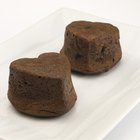
The flipping, the pressing, the rolling feeling of dough as it is being kneaded underneath hands is a tangible reminder of the bread yet to be baked. But once the dough is kneaded and left to proof, it often becomes a forgotten bowl covered with a cloth in the corner of a warm kitchen. Using dough that has been forgotten overnight depends on the temperature it was left at, the ingredients, and the desired flavor and texture.
Temperature
Standard dough left to rise at room temperature typically takes between two and four hours, or until the dough has doubled in size. If left for 12 hours at room temperature, this rise can slightly deflate, though it will still remain leavened. Some doughs should be left to rise overnight or be kept in a refrigerator. The lower temperature of the fridge slows the yeast down, causing the dough to rise more slowly. If the dough has been forgotten in the fridge overnight, the resulting dough will be similar to a dough that had been left to proof in a warm place for the standard two to four hours.
Ingredients
Ingredients that do not need refrigeration are typically OK when left combined in room temperature dough overnight. But if the dough contains milk-based products, like sour cream or yogurt, they can easily go bad if left out for several hours. The U.S. Department of Agriculture advises against consuming milk products that have been left out at room temperature. If the dough was left overnight in the refrigerator set to 40 degrees Fahrenheit or below, this is not a concern.
Flavor and Texture
With a refrigerated dough that has been left overnight, the flavor and texture will be similar to the original recipe. If the dough has been left on the counter, it will develop a slightly sour taste. The texture of the bread will become thicker and may not rise as much during the second rise or the final baking. If it is left overnight during the second proof, it will also be a different shape than expected, as over-proofing makes bubbles expand beyond normal and then collapse when they are baked.
Considerations
Leave dough overnight, with no milk product ingredients, if you're OK with a slightly more sour, fermented flavor. Some recipes call for leaving dough out to get this flavor. Leaving dough to rise overnight also need not be an accident -- it can be done to shorten preparation time in the morning and is standard when you're making cinnamon buns.
Related Articles

Does Cream Cheese Filling Have to Stay ...
Can I Store Biscuit Dough Overnight?

Can You Refrigerate Homemade Yeast ...

What Happens if the Yeast Dies Before ...

Why Bread Dough Does Not Rise

Does Tiramisu Have to Stay Refrigerated?

What Is the Difference Between Scones & ...
Can You Refrigerate Homemade Yeast ...

Can Fast Acting Yeast Be Used in Place ...

Can You Make Croissants With Baking ...
How to Make Homemade Bread

How to Make Bread Tender

How Long Can a Bagel With Cream Cheese ...

What Is a Souffle Dish?

What is the Origin of the Croissant?
Quick and Easy French Bread Recipe

How to Increase the Yeast Taste in Bread

What Happens if You Leave Bread Dough ...
Does Cake Flour Contain Baking Soda & ...

The Purpose of Buttermilk in Baking
References
Writer Bio
Based in Kingston, Canada, Samantha Lowe has been writing for publication since 2006. She has written articles for the "Mars' Hill" newspaper and copy for various design projects. Her design and copy for the "Mars' Hill" won the Associated Collegiate Press Pacemaker award in 2008. Lowe holds an Honors BA from Trinity Western University, and a MSc in Occupational Therapy from Queen's University where she is currently doing her PhD.
Photo Credits
Hemera Technologies/AbleStock.com/Getty Images